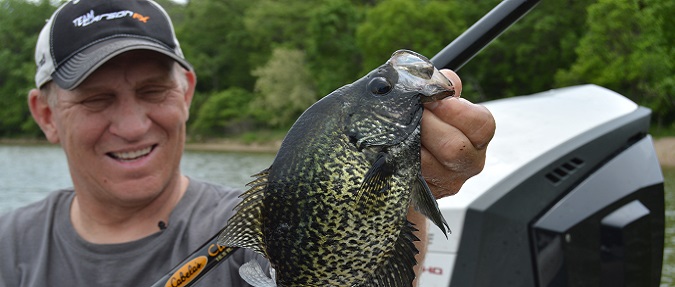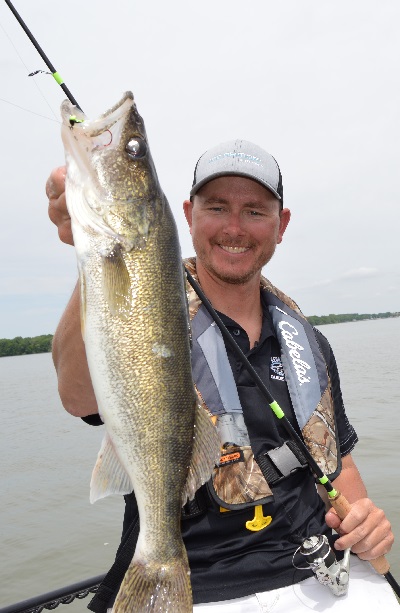My friend Mike Frisch and I went fishing on Clear Lake in north Central Iowa this past week. I get to fish Clear Lake several times every year: Mike visited Clear Lake a lot in the early 90’s. Clear Lake was a good body of water then, but it’s an outstanding fishery now. In fact, Clear Lake is one of the premier multi-specie fisheries in the Midwest. On our most recent trip to Clear Lake we fished with Kevan Paul. Kevan is a very successful angler and a real good guide. He not only takes his clients fishing, he explains what they’re doing and why they’re doing it to catch fish. When Mike, Kevan, and I hit the water on Clear Lake we did some interesting things to catch the fish, and boy did we catch fish.
We had all the traditional walleye gear: Jigs and rigs and spinners and crankbaits and slip-bobbers. We started off with the slip-bobbers and caught several really nice walleyes in a short period of time. Then the action slowed and we changed techniques. The wind was from the south so we headed to the north shoreline. On most bodies of water, walleyes like the wind. What we did when got there though was kind of different. The technique we employed was one that Mike and I were very familiar with for largemouth bass, but not for walleyes.
We tied sixteenth ounce round head Fire-Ball jigs and eighth ounce stand-up Fire-Balls onto our line and tipped them with either a minnow or leech. Either worked equally well. And then we started make short casts to docks. If we had been pitching the jigs to rock-piles or weedbeds, that would have been normal walleye fishing, but we were throwing our jigs under docks and around boat lifts, much like we do when we’re bass fishing. And we were catching walleyes consistently. Doubles were frequent. This was fun fishing, it was productive, and it’s a technique that Mike and I will remember when we encounter similar conditions on other bodies of water.
Kevan then asked if we would like to catch some crappies. We said yes. I noticed when we loaded the boat in the morning that Kevan had put some telescoping rods in the boat, but I hadn’t paid much attention. When Kevan said those were the rods we would be using for crappies, I paid attention. They were Cabela’s rods that telescoped out to sixteen feet and they had about twenty four inches of line tied to the tip. A small Fire-fly jig was tied to the end of the line.
We moved into an expansive bed of rushes and started dropping the jig into small openings in the vegetation. Again, Mike and I have employed this technique with other styles of rods for largemouth bass many, many times in the past few years. On this day though, we caught crappies and big bluegills. We simply swung our jig into an opening in then weeds and let it quiver just below the surface. We let it hang there for three or four seconds, then swung it into a new spot. We saw almost every crappie that hit. They weren’t all big, but they were all fun to catch on a short line in heavy cover.
Our day on Clear Lake was a big success. We caught a lot of fish, we found out that old techniques will work for new species of fish, and we had a good time, and the good time in particular is why we go fishing.
To see all the most recent episodes of the Fishing the Midwest television series, new fishing related tips, and fishing articles from the past, go to fishingthemidwest.com If you do Facebook, check us out for a variety of fishing-related things.
